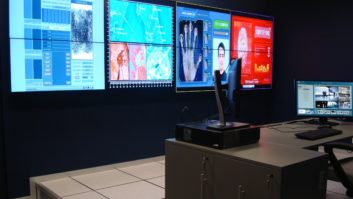
In the first part of this unified communications and collaboration feature we looked at the factors driving the increase in companies partnering across the UCC marketplace. Here Duncan Proctor considers how this, along with other technological shifts, will affect integrators.
“In the past, the go-to-market for videoconferencing solutions had been 100% channel, as it required heavy integration services and so on,” explains Michael Helmbrecht, chief product and operations officer, Lifesize. “As easy to install ‘plug-and-play’ endpoints and downloadable cloud-based apps have gained pace, it has driven different expectations for the buyer’s experience, which requires business adjustments for many integrators. Whenever there is a fundamental change in technology and customer buying behaviour, integrators face the question of how they add value for customers in a rapidly shifting market.”
Far from viewing these developments as a threat to the integrator, Sudeep Trivedi, head of partnerships for Logitech Video Collaboration, believes that “integrators play a more important role than ever, albeit in a different capacity to what they’ve previously known. Users’ needs for collaboration are more important and complex than ever before, and proper implementation is paramount.”
The drop in price and improvements to performance also means customers have the resources to specify modern solutions in every meeting room. “Instead of just assisting with the deployment of complex proprietary AV hardware in a small number of boardrooms, integrators should be offering a higher level of service to address customers’ holistic collaboration needs for each and every meeting space,” says Trivedi.
Coming back to Helmbrecht, although there are challenges, integrators should recognise this as a great opportunity to “help customers navigate through this changing landscape, plan and deploy new solutions, and support them in enabling user adoption.”
He continues: “In order to be successful, there are additional capabilities that integrators will develop and business changes for which they need to prepare. As solutions and markets change, revenue opportunities do as well.
“In addition to project-based services to design and deploy, there is the opportunity to build a recurring revenue stream and develop more business by working with customers to expand their user base and the scope of their solution over time. This requires a strategic conversation to understand customers’ broader communication and collaboration needs and plans.”
Mary Ann de Lares Norris, VP EMEA of Oblong Industries, is in agreement: “With the speed of innovation and the plethora of options in the marketplace, customers need subject-matter experts to guide them to the choices that are going to be the best fit for the workflow issue they would like to address. AV integrators are playing an ever-increasing role in guiding their customers to the solutions that will deliver innovation and long-term value.”
Tim Stone, VP of EMEA marketing at Polycom, also sees the significant potential available for integrators. “The convergence of traditional videoconferencing and unified communications platforms provides a massive opportunity to AV integrators. Customers are demanding a simplified user experience where users can join meetings from any room or device, so integrators need to be able to build services to integrate UC and AV environments together. As an example there is a major opportunity around Skype for Business integration services. There is a great opportunity for AV integrators to embrace this next wave of convergence that is happening now, and dramatically broaden their addressable market to address the much larger UC market opportunity.”
www.lifesize.com
www.logitech.com
www.oblong.com
www.polycom.com







